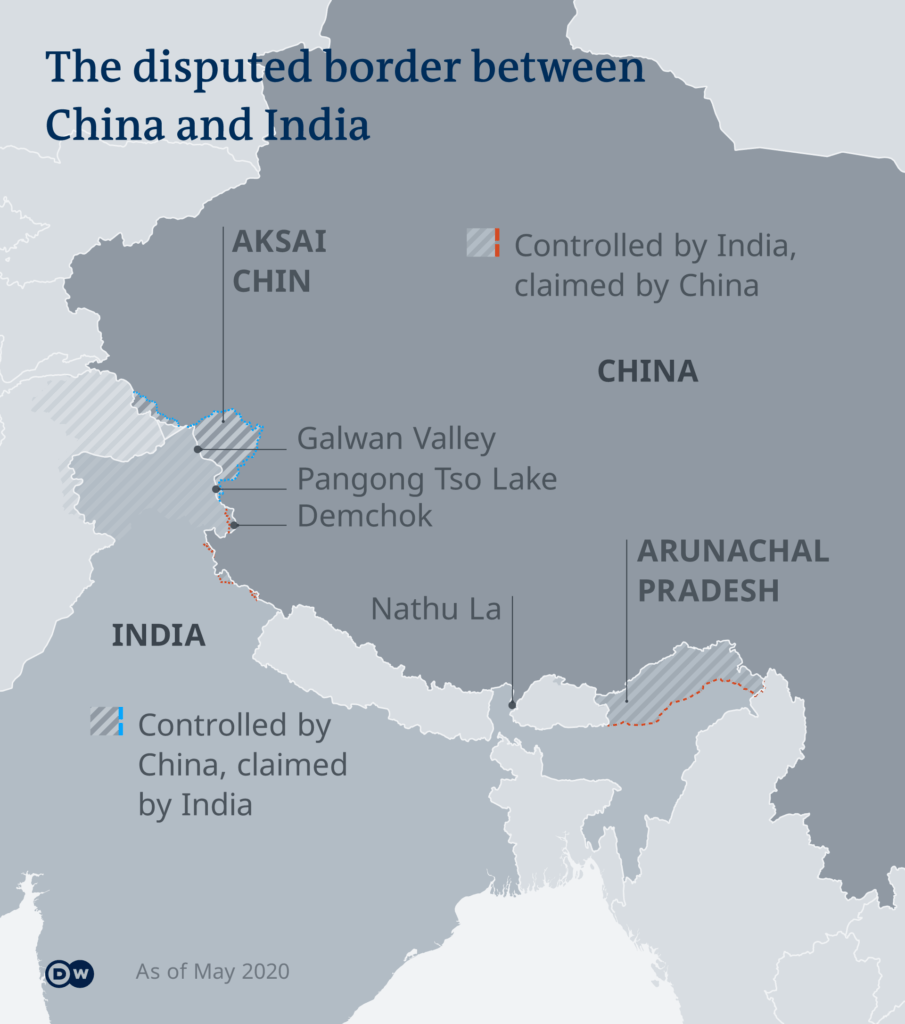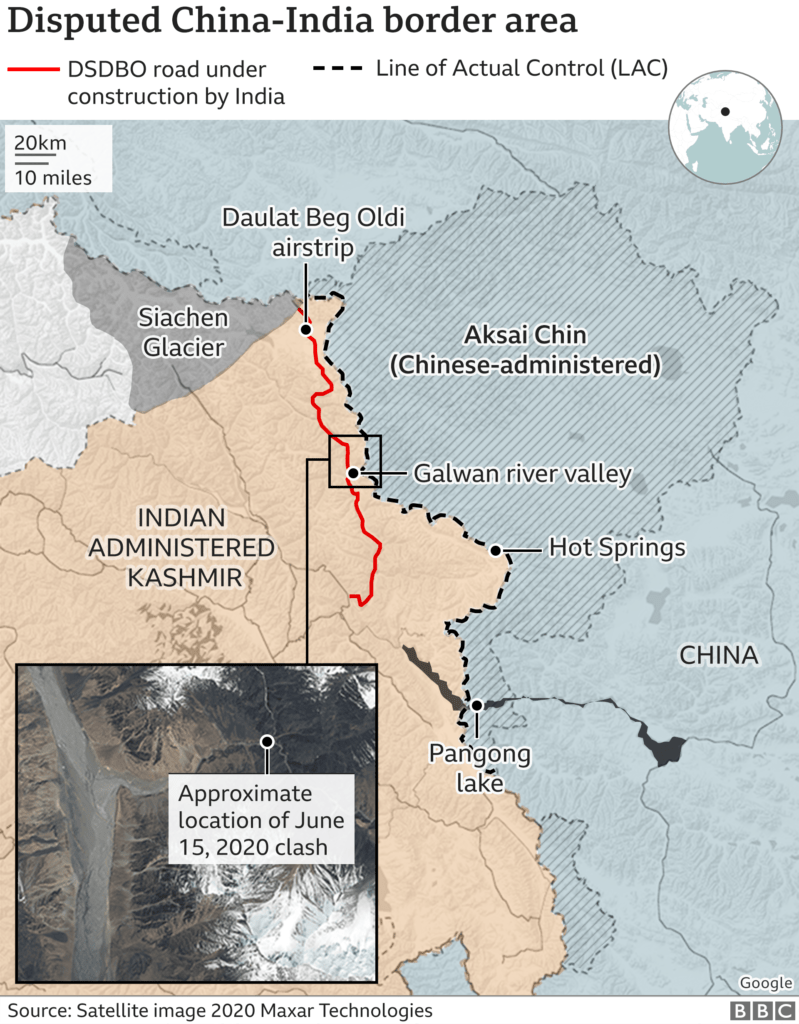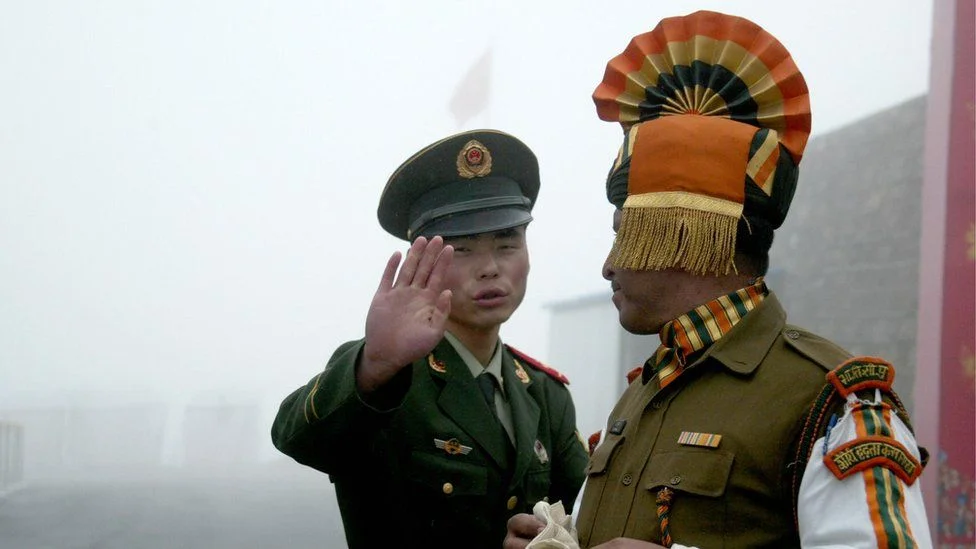India and China are the two great powers of Asia. Being the most populous countries, they are also two of the world’s most ancient civilizations.
Historically, many historians have traced the cultural linkages dating back to the 2nd century BC. From foreign travelers to invasion and cultural artifacts, much historical evidence is found in both nations. Moreover, the two countries maintained strong ties even during the colonial period, from the tea trade to the opium wars.

In 1949, due to the communist revolution, China became the People’s Republic of China. However, India tried its best to maintain good relations with China. It was the first non-communist country to recognize communist China in 1949. India even supported China’s claim for membership in the United Nations also acknowledging China’s claim over Formosa.
INDIA – CHINA RELATIONS IN THE EARLY PHASE
The remarkable feature of the early phase of India-China relations was a close, warm friendship, despite China’s military takeover of Tibet in 1950. China also appreciated India’s neutral and mediatory role in easing the problem in Korean Peninsula ( 1950 – 1953 ).

In 1954, India and China signed an agreement on trade and intercourse between the Tibet region of China and had an exchange of notes.
The treaty’s preamble embodies the famous ‘Panchsheel Principles’ and is marked by the slogan of
‘Hindi Chini Bhai Bhai’.
(Indians and Chinese are brothers)
Even in the same year, Indian Prime minister Jawaharlal Nehru visited China. However, by the late 1950s, severe differences between the two countries had begun to surface, particularly over the non-demarcated border, unfortunately causing a war between India and China in 1962.

INDIA-CHINA BORDER DISPUTES
ARUNACHAL PRADESH ( McMahon line )
Arunachal Pradesh is among the significant contention regions between India and China. China considers Arunachal Pradesh, particularly the strategic area of Tawang, as part of Southern Tibet.
The main reason for the dispute in Arunachal Pradesh started immediately after the Chinese Revolution in 1911with China refusing to recognize Arunachal Pradesh as a part of the Indian state.
The McMahon line was determined in 1914 at the Shimla Conference attended by representatives of British India, Tibet, and China. Arthur Henry McMahon, the British Indian representative, suggested a boundary line that came to be known as the McMahon line.

India has always treated the McMahon Line as the legitimate border, but China condemns it as an imperialist line.
LADAKH (AKSAI CHIN)
There is no agreement on the Ladakh-China border. The boundaries beyond the extremities of Aksai chin near Pangong lake and Karakoram pass were well defined, but the Aksai Chin area was undefined.
The British also failed in the clear demarcation of the border between Ladakh-China. British proposed two borders between India-China: the Johnson line and McDonald line.
W.H.Johnson, a civil servant of India, proposed the “Johnson Line “in 1865, which put Aksai Chin in Kashmir. The British presented Macartney -MacDonald line to the Chinese in 1899 by Sir Claude Macdonald.

According to Johnson line, Arunachal Pradesh is a part of India. On the contrary, the McDonald line considers Arunachal Pradesh part of China. India considers the Johnson line legitimate, while China considers the McDonald line legitimate.
SINO- INDIA WAR 1962
On September 8, 1962, Chinese troops crossed the McMahon line in North Frontier Agency (NEFA) and occupied Indian territory. Chinese launched a massive attack on October 20, 1962, in NEFA and Ladakh sector. By October 25, 1962, the Chinese were inside India about 16 miles south of the McMahon line.
Most of the problems took place at high elevations. The main reason for the war was over the dominion of the recently separated Aksai chin area.
Later the entire area claimed by China in Ladakh was captured by its army. In November 1962, the Chinese announced a unilateral cease-fire. Despite the severe level of war, no formal declaration of war was made, and diplomatic missions in both countries were not closed.
INDIA – CHINA CURRENT BORDER ISSUE ( GALWAN VALLEY)

The connection between India and China has become more complicated in recent times. Galwan valley refers to the land between steep mountains that buffet the Galwan river. The positioning of the LAC has never been agreed upon, and it has been neither defined nor demarcated.
There is no official map that depicts the LAC. India has been working to better its roads and military infrastructure around LAC. India completed the DBO (The Darbuk–Shyok) road, which links to The Karakoram pass.
Analysts on Chinese foreign policy suggested that China’s aggressive posture is focused on the LAC and Hong Kong, Taiwan, and the South China Sea. The strategy behind China’s transgression across LAC may indicate India to reevaluate its strategic convergence with the US.

picture Credits@ BBC
The current issue of recognizing the LAC speculates that both sides’ territories are under pressure, which has led to an unresolved boundary dispute.
RACE TO DEVELOP BORDER INFRASTRUCTURE
India and China are also competing to build infrastructure along the border. Unfortunately, the year 2020 was incredibly violent. The clash in the Galway valley took place in June, which Chinese troops attacked with sticks and clubs and did not use guns.
It was the first destructive confrontation between the two sides since 1975. India’s construction of a new road to a high altitude airbase can be considered one of the main reasons for the clash with Chinese troops in June, resulting in 20 Indian soldiers dead. India accused China of evoking military tensions at the border. China denied the charges and blamed India for the standoff.

While New Delhi and Beijing have called for dialogue and disengagement to ease tensions, some of their subsequent actions have done little to ease fears of further escalation.
The withdrawal from the Gogra area is where soldiers of the Indian Army and the People’s Liberation Army have dissociated so far to end the military standoff along the LAC, the de facto border between India and China, in Ladakh. The two countries are reportedly establishing no – patrolling buffer zones in areas of disengagement. Still, worryingly, these “buffer zones” are mainly coming up in what India claims to be its territory.
CHINA’S NEW LAW
China’s recent law on land borders came into effect on 1st January 2022. It comes to a period when the border standoff in eastern Ladakh remains unsettled. Many places in Arunachal Pradesh have been renamed by China to proclaim the Indian state. According to the new law, the People’s Republic of China will set up boundary lines on all its land borders to clearly mark the border.

The People’s Liberation Army and Chinese people’s Armed Police Force are allocated to maintain security along the border. It also includes assisting local authorities in combating illegal border crossing.
The law debars any area from indulging in any activity in the border area, which would endanger national security or affect China’s close connection with neighbouring countries. The law involved visions for forming joint committees for both civil and military.
The law calls for increased settlement of the civilian population and improved infrastructure along the border area.
India criticized China for approving a new land boundary law, which India claims could affect the two countries’ long-running border dispute. Indian External Affairs Ministry member said India must assume that China will avoid taking action under this new law.

As this can individually affect the circumstances in India China border areas. China and India must recognize that both are critical for their economic revival.
The two countries can effectively use their soft power to further assimilate their economies. It will be to the benefit of both India and China to stand by the policy of Panchsheel and combine their energies for advancement for their people, region, and global peace.
You may also like this: “The Real Threat”: Women’s Rights In Afghanistan During The Regime Of The Taliban
About the Author
Komal Chaudhary

Komal is a very passionate girl who loves to explore new things. Currently, she is doing Masters in Political Science from Delhi University. In addition, she has a keen interest in international affairs and effectively pursues the same. As a youth of the contemporary world, she aspires to make the Indian population more conscious and knowledgeable by working with The International Prism.







This is soo informative !! Summarised it really well.
It was superb, very creative And it was Very interesting. Keep going!
[…] in Hong Kong 6 hours agoPROTECTIONISM TO FREE TRADE: INDIA’S FTA WITH UK AND AUSTRALIA 4 days agoIn a nutshell: India-China Relations a history of distrust. 6 days agoTHE GREEN DEAL: EUROPE AND ITS DREAM OF CLIMATE NEUTRALITY 1 week agoThe curious case […]
[…] more about India-china relations […]
[…] Read another exciting article to know more about the India-China relationship, In a Nutshell: India-China Relations a history of distrust. […]